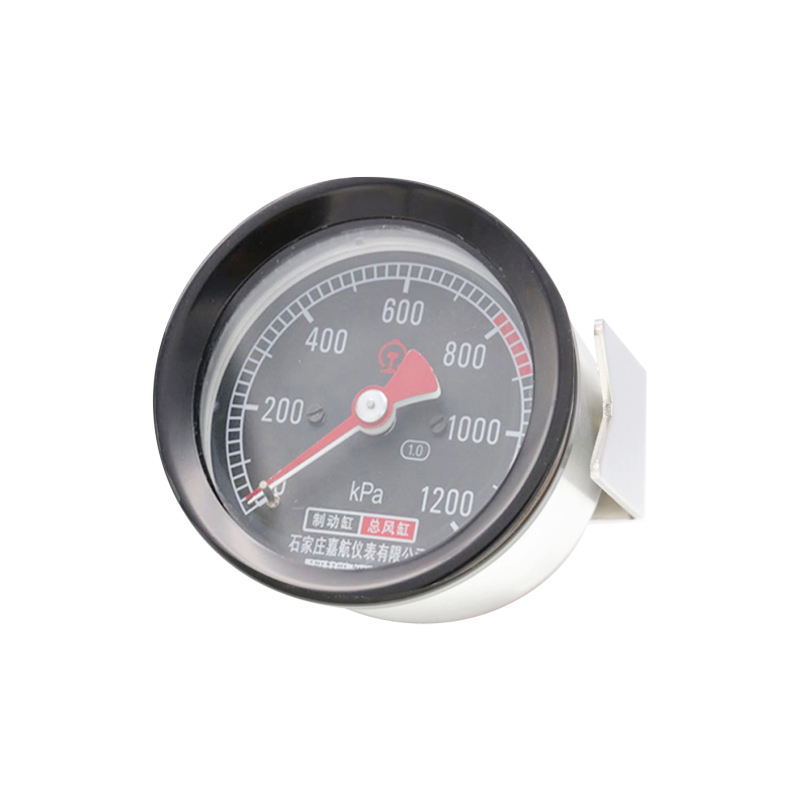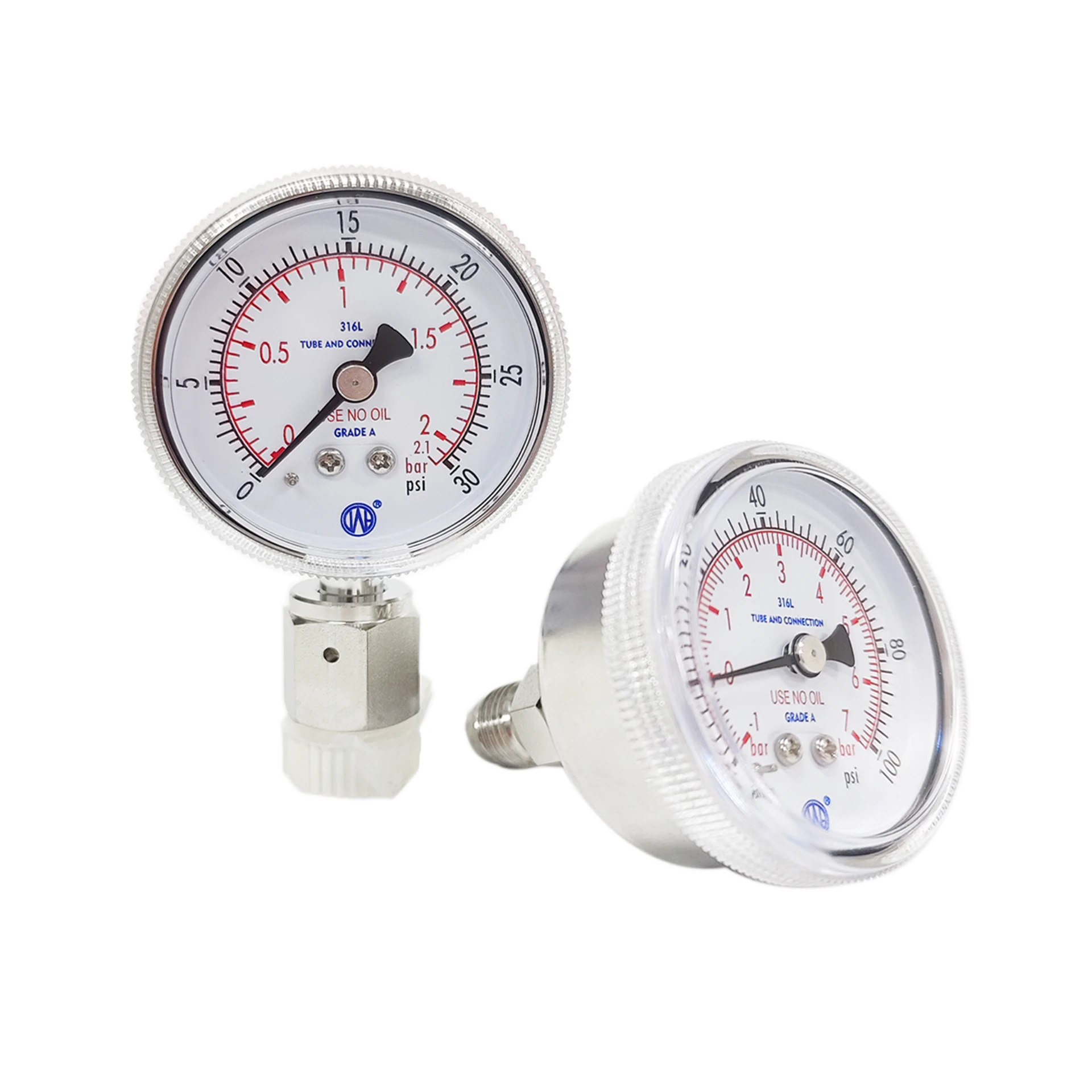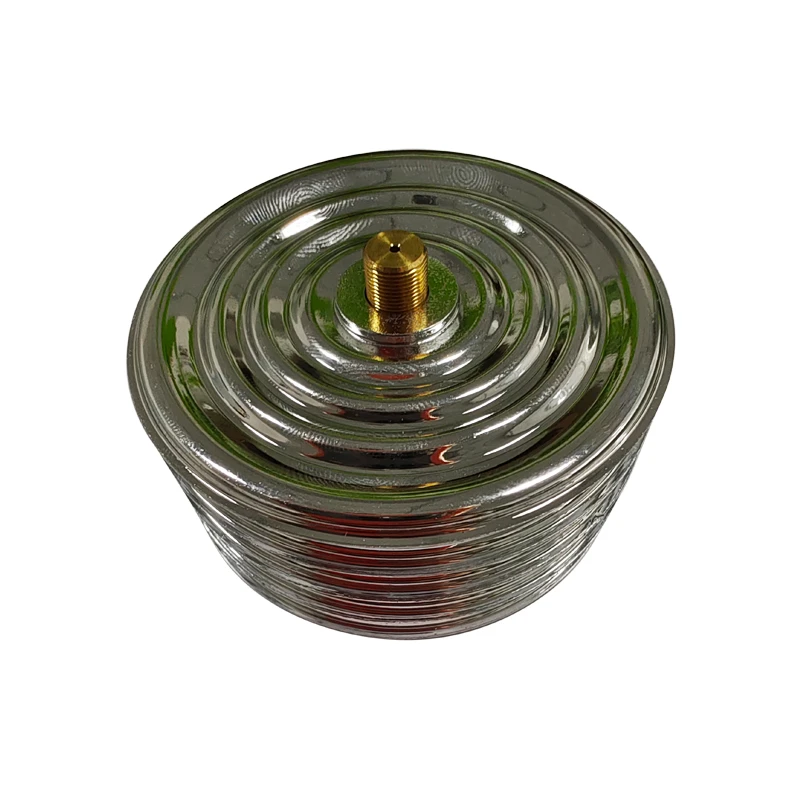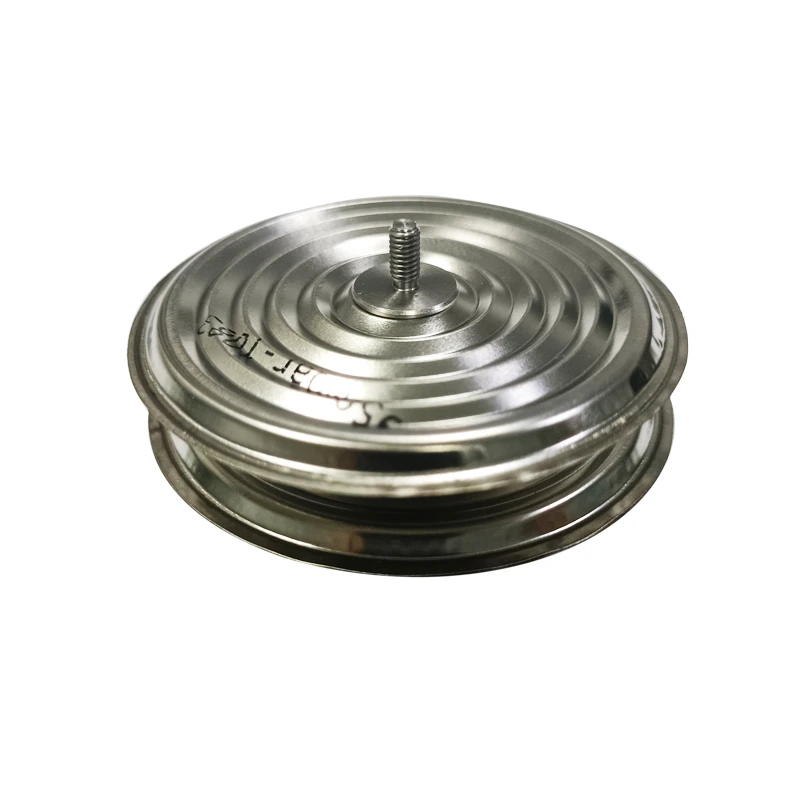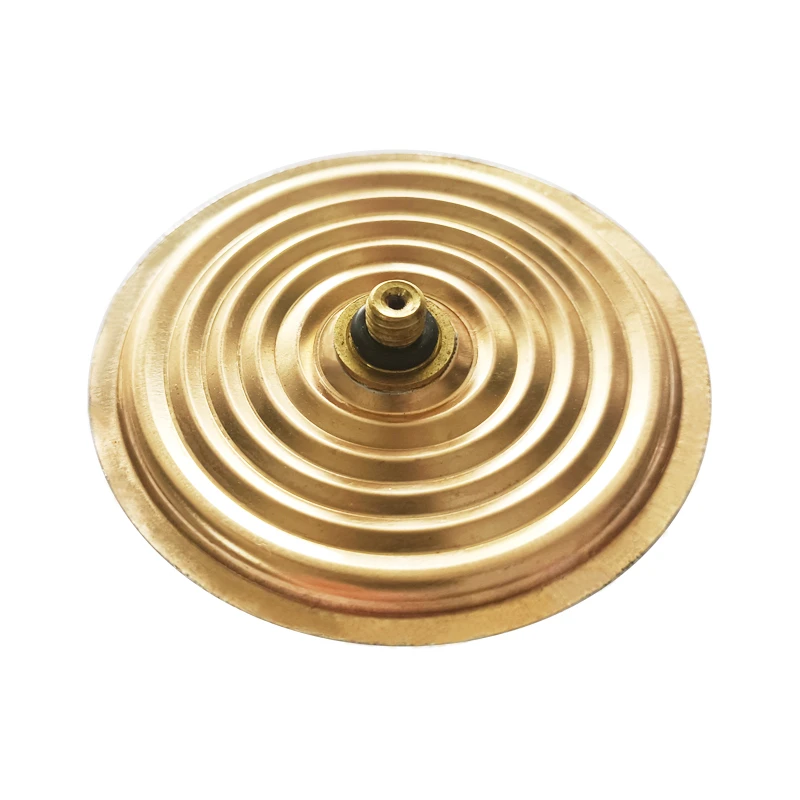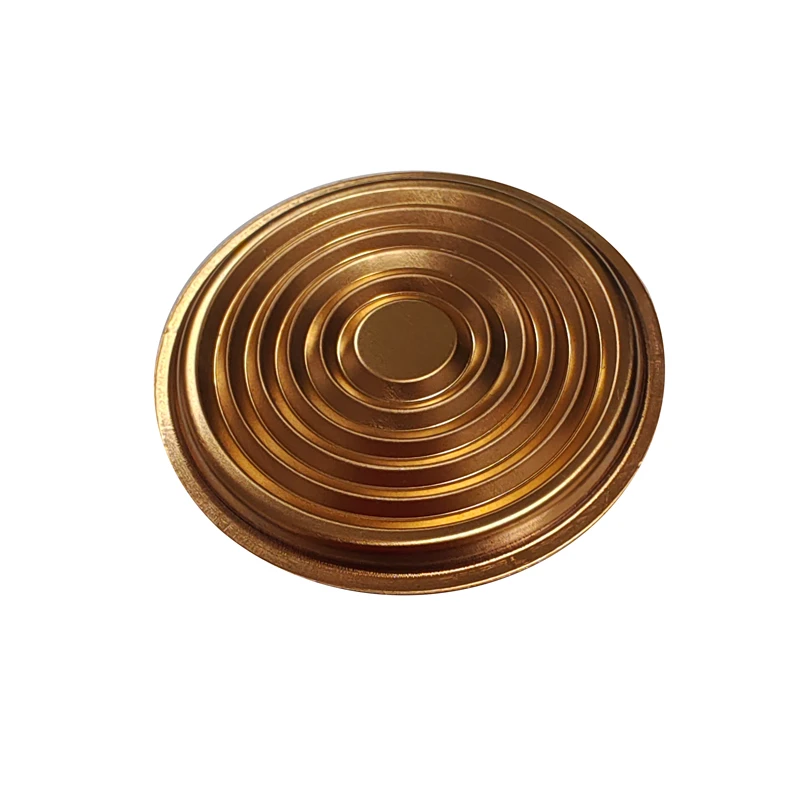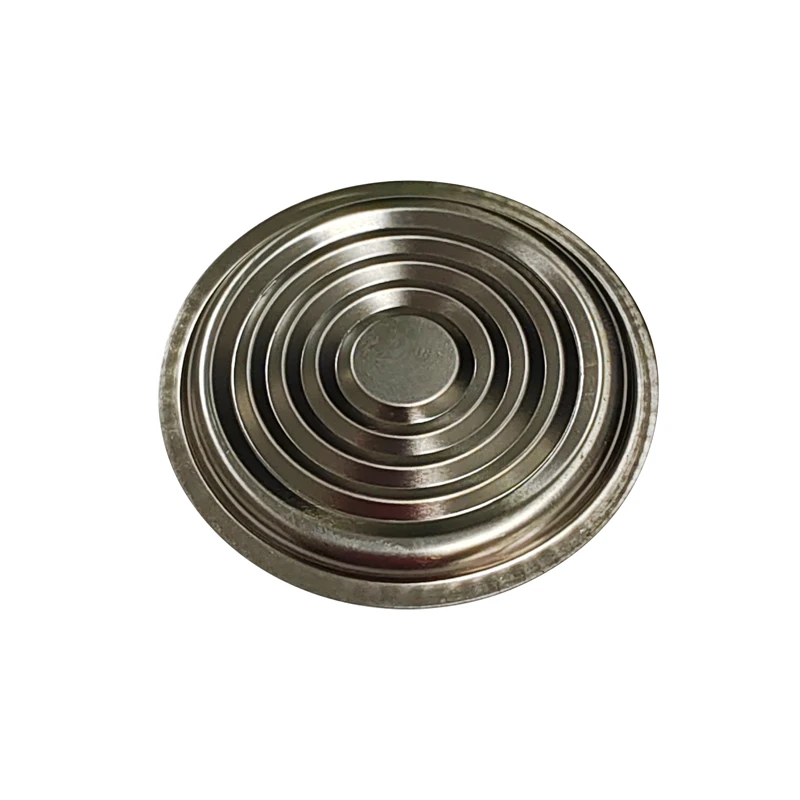In the world of industrial applications, precision and reliability are paramount. Introducing our state-of-the-art Pressure Diaphragm, designed to meet the rigorous demands of various industries, including oil and gas, pharmaceuticals, food and beverage, and water treatment. This innovative product combines cutting-edge technology with robust engineering to deliver unparalleled performance and accuracy in pressure measurement and control.
What is a Pressure Diaphragm?
A pressure diaphragm is a critical component used in pressure sensing devices, such as pressure transmitters and gauges. It acts as a barrier between the process fluid and the sensing element, translating pressure changes into measurable signals. Our Pressure Diaphragm is crafted from high-quality materials, ensuring durability and resistance to corrosion, temperature fluctuations, and other harsh environmental conditions.
Key Features and Benefits
1. Exceptional Accuracy: Our Pressure Diaphragm is engineered to provide precise pressure readings, ensuring that your processes operate within optimal parameters. With a high sensitivity design, it minimizes errors and enhances the reliability of your pressure measurement systems.
2. Robust Construction: Made from premium materials, our diaphragm is built to withstand extreme pressures and temperatures. Whether you are dealing with corrosive chemicals or high-temperature steam, our diaphragm offers the durability you need to maintain operational integrity.
3. Versatile Applications: The Pressure Diaphragm is suitable for a wide range of applications, from monitoring pressure in hydraulic systems to controlling flow rates in chemical processing. Its versatility makes it an essential component for engineers and technicians across various sectors.
4. Easy Installation and Maintenance: Designed with user-friendliness in mind, our Pressure Diaphragm can be easily integrated into existing systems. Its low-maintenance design reduces downtime and operational costs, allowing you to focus on what matters most—your production.
5. Customizable Options: We understand that every application is unique. That’s why we offer customizable options for our Pressure Diaphragm, including different sizes, materials, and pressure ranges. Our team of experts is ready to work with you to develop a solution that meets your specific needs.
6. Enhanced Safety Features: Safety is a top priority in any industrial setting. Our Pressure Diaphragm is designed with built-in safety features to prevent overpressure situations, ensuring the protection of both personnel and equipment.
Why Choose Our Pressure Diaphragm?
When it comes to pressure measurement and control, you need a product that you can trust. Our Pressure Diaphragm stands out in the market due to its combination of advanced technology, superior materials, and a commitment to quality. We adhere to the highest industry standards, ensuring that our products not only meet but exceed your expectations.
In an era where precision and reliability are more critical than ever, our Pressure Diaphragm offers a solution that empowers industries to operate efficiently and safely. Whether you are looking to enhance your existing systems or develop new applications, our diaphragm is the ideal choice for achieving optimal performance. Experience the difference that quality engineering can make—choose our Pressure Diaphragm for your pressure measurement needs today!
For more information or to request a quote, please contact our sales team. We look forward to partnering with you to elevate your operations to new heights!
-
railway pressure gauge-double-pointers-double-tubesYTS-100Z
-
(Ultra)high purity clean pressure gauge-UPG50 / HPG50
-
Pressure Diaphragm Capsule-Capsule string-Cube electroplate
-
Pressure Diaphragm Capsule-Dual Capsule-316/L SS
-
Pressure Diaphragm Capsule(DC)-316 SS-48mm
-
Pressure Diaphragm Capsule(DC)-All copper type-48mm
-
Pressure Single Diaphragm -micropressure-48mm,CuBe2
-
Pressure Single Diaphragm -Corrugated diaphragm-micropressure316/LSS
-
C+H Ø75AS Pressure Diaphragm(PD)-All copper type2.5MPa
How Is Pressure Measured By The Diaphragm?
Pressure measurement is a critical aspect of various industrial applications, ranging from oil and gas to pharmaceuticals. One of the most effective and widely used methods for measuring pressure is through the use of a pressure diaphragm. This article explores how pressure is measured by the diaphragm, its working principles, and its applications.
A pressure diaphragm is a flexible membrane that separates two different pressure environments. Typically made from materials such as stainless steel, rubber, or other elastomers, the diaphragm responds to changes in pressure by deforming. This deformation is the key to measuring pressure accurately.
The fundamental principle behind pressure measurement using a diaphragm is based on the relationship between pressure and force. When pressure is applied to one side of the diaphragm, it exerts a force on the membrane. This force causes the diaphragm to deflect, and the amount of deflection is directly proportional to the pressure applied. The diaphragm's movement can be measured using various methods, including mechanical, electrical, or optical sensors.
One common method of measuring the deflection of a diaphragm is through the use of a mechanical gauge. In this setup, the diaphragm is connected to a pointer or a dial. As the diaphragm deflects due to the applied pressure, the pointer moves along the dial, providing a visual representation of the pressure level. This type of gauge is often found in applications where a simple and direct reading is required.
In more advanced applications, electronic sensors are used to measure the diaphragm's deflection. These sensors can convert the mechanical movement of the diaphragm into an electrical signal. For instance, strain gauges can be bonded to the diaphragm's surface. When the diaphragm deforms, the strain gauges experience a change in resistance, which can be measured and converted into a pressure reading. This method allows for high precision and can be integrated into automated systems for real-time monitoring.
Another innovative approach to measuring pressure with a diaphragm involves the use of capacitive sensors. In this method, the diaphragm acts as one plate of a capacitor, while a fixed plate serves as the other. As the diaphragm deflects under pressure, the distance between the two plates changes, altering the capacitance. This change can be measured and correlated to the pressure applied, providing a highly sensitive and accurate pressure measurement.
Diaphragm pressure sensors are widely used in various industries due to their reliability and versatility. They can measure both static and dynamic pressures, making them suitable for applications such as monitoring fluid levels, detecting leaks, and controlling processes in manufacturing. Additionally, diaphragm-based sensors can be designed to withstand harsh environments, including high temperatures and corrosive substances, making them ideal for use in chemical processing and oil and gas industries.
In conclusion, pressure measurement using a diaphragm is a fundamental technique that leverages the mechanical properties of a flexible membrane to provide accurate and reliable pressure readings. Whether through mechanical gauges, electronic sensors, or capacitive methods, diaphragm pressure measurement systems are essential tools in modern industrial applications. Their ability to deliver precise measurements in a variety of conditions ensures their continued relevance in the ever-evolving landscape of technology and engineering.
Why Do I Have Pressure In My Diaphragm?
The diaphragm is a crucial muscle that plays a significant role in respiration. Located just below the lungs, it separates the thoracic cavity from the abdominal cavity and is essential for breathing. However, many individuals experience discomfort or a sensation of pressure in their diaphragm area, leading to questions such as, "Why do I have pressure in my diaphragm?" Understanding the causes of this pressure can help in addressing the underlying issues and improving overall well-being.
What is the Diaphragm?
The diaphragm is a dome-shaped muscle that contracts and flattens when you inhale, allowing air to fill the lungs. When you exhale, the diaphragm relaxes and returns to its original shape, pushing air out of the lungs. This muscle is not only vital for breathing but also plays a role in core stability and posture. Given its importance, any sensation of pressure in the diaphragm can be concerning.
Common Causes of Diaphragm Pressure
1. Gastroesophageal Reflux Disease (GERD): One of the most common reasons for experiencing pressure in the diaphragm is GERD. This condition occurs when stomach acid flows back into the esophagus, leading to a burning sensation and pressure in the chest and diaphragm area. Individuals with GERD may also experience heartburn, regurgitation, and difficulty swallowing.
2. Anxiety and Stress: Psychological factors can manifest physically, and anxiety is a significant contributor to diaphragm pressure. When a person is anxious or stressed, they may breathe more shallowly or rapidly, leading to tension in the diaphragm. This can create a feeling of tightness or pressure in the chest area.
3. Muscle Strain: Just like any other muscle in the body, the diaphragm can become strained or overworked. Activities that involve heavy lifting, intense exercise, or even prolonged coughing can lead to muscle fatigue and discomfort. This strain can result in a sensation of pressure in the diaphragm.
4. Hiatal Hernia: A hiatal hernia occurs when a portion of the stomach pushes through the diaphragm into the chest cavity. This condition can cause symptoms such as heartburn, chest pain, and pressure in the diaphragm. It is often associated with GERD and may require medical intervention if symptoms are severe.
5. Respiratory Conditions: Conditions such as asthma, pneumonia, or chronic obstructive pulmonary disease (COPD) can lead to increased pressure in the diaphragm. In these cases, the diaphragm may have to work harder to facilitate breathing, resulting in discomfort or a feeling of pressure.
When to Seek Medical Attention
While occasional pressure in the diaphragm may not be a cause for concern, persistent or severe symptoms should not be ignored. If you experience significant discomfort, difficulty breathing, or other alarming symptoms such as chest pain or dizziness, it is essential to seek medical attention. A healthcare professional can help determine the underlying cause and recommend appropriate treatment.
Experiencing pressure in the diaphragm can stem from various factors, including gastrointestinal issues, anxiety, muscle strain, and respiratory conditions. Understanding these causes is the first step toward addressing the discomfort. If you find yourself frequently asking, "Why do I have pressure in my diaphragm?" consider consulting a healthcare provider to explore potential solutions and regain your comfort and peace of mind.


